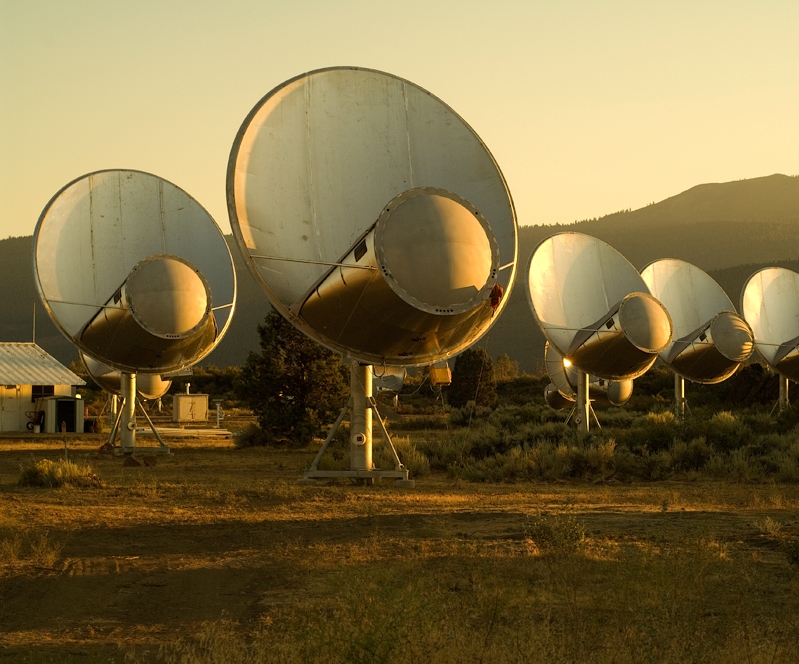Charles Elachi, Director of the NASA Jet Propulsion Lab at Caltech, doesn’t hesitate when he’s asked about life beyond earth. “Personally, I think absolutely,” he said today at The Atlantic‘s Big Science Summit in San Jose, California. “We have the same laws of chemistry, physics. If there are any locations where there are the basic ingredients, there should be the basic ingredients for life.”
 One ingredient, of course, is water. On Mars, images from orbit show what looks like dried up drainage channels. Elachi compares them to the patterns you can see as you fly over Egypt’s desert — an imprint that marks where water once was. The Mars rovers Spirit and Opportunity found other hints of water on Mars as well. “We found rocks that have been modified by the presence of water,” he said.
One ingredient, of course, is water. On Mars, images from orbit show what looks like dried up drainage channels. Elachi compares them to the patterns you can see as you fly over Egypt’s desert — an imprint that marks where water once was. The Mars rovers Spirit and Opportunity found other hints of water on Mars as well. “We found rocks that have been modified by the presence of water,” he said.
It would be ideal, of course, if NASA’s newest arrival on Mars, the Curiosity rover, were to stumble upon a fossil. But absent that, NASA will continue gathering data, looking for signs of that something might have lived 127 million miles away. Much of the intense interest, says Elachi, spring from the similarities between Earth and Mars. “They have similar initial conditions. One went this way and and the other went that way. How did life start on this planet [Mars] and somehow stop? Or it never started?”
There’s still a lot to learn. Elachi is thinking beyond even Curiosity to the work that could be done on Mars over the next decade. With the right amount of money and attention, Elachi believes, flying and driving robots could have a continuous presence on the planet.
He also believes a trip to Jupiter’s moon Europa is possible in the next decade. Europa contains an ocean larger than the Earth’s under its icy surface. Perhaps there, beneath the ice, NASA could find the smoking gun of life beyond Earth.
By Rachel Swaby, The Atlantic


1 comment
WHY is it important to search for life on other planets? Why is it important to continue to search for new medicines that will save human lives? Both questions share a common goal: TO SAVE HUMANITY so that humans may continue to flourish.
Once it is found that life of any type, on another planet, exists or has existed at some time in the past then you just have to do the simple mathematics and use common sense. With the billions of star systems in just our galaxy, somewhere there WILL be a planet, or many planets, with similar chemistry and size to our earth that will support human life.
Most of us make fun of people who have walked around carrying signs stating that life on earth will end next year or 10 years from now, or even in the case of the Mayan calendar that seems to have predicted the end of life several hundreds of years after its invention. And most scientists agree that it is unlikely that humanity will end for thousands of years or an even greater time than that. However, unless a new planet is found that humans will be able to send their seed to or even possibly create vehicles capable of transporting actual humans to that planet, HUMANITY WILL END.
The physical laws that are known, without any doubt, reliably predict that one day our sun (remember our sun is just another star in our galaxy) will go nova. Part of the sun changing to the state of a nova is that it will greatly expand and as it does that it will envelop our planet and burn and melt most of it so that humanity and every other living thing on it will be gone. The oceans will be boiled away. No deep earth “bomb shelters” will be adequate to save anyone. That is only the fiction of movies from Hollywood, U.S.A.
Humans have always seen the importance of doing things that will help our children of the future, and their children to succeed in living. This is part of the greatness of humanity. It is unselfish because we in the present do not benefit in any material way from trying to make sure our descendants survive. However, it is the right thing to do.